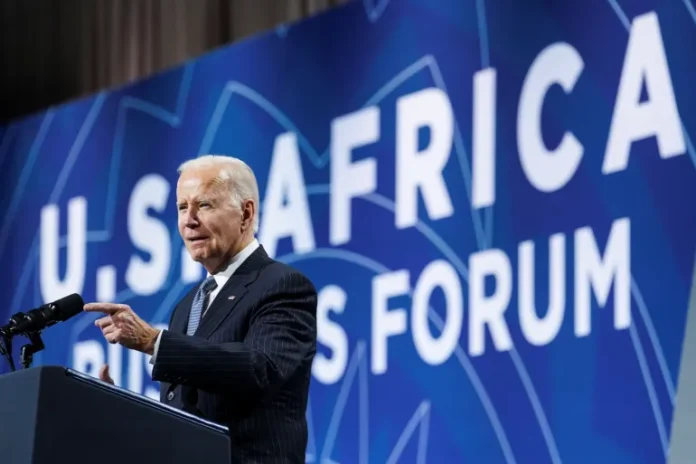Author: GP Editor
Affiliation: Geopolitics Press
Organization/Publisher: Geopolitics Press
Date/Place: August 20, 2021/U.S.
Type of Literature: Analysis
Word Count: 3550
Link: https://www.geopolitics.press/tutsi-rpf-tplf-rwanda-zaire-endf-kenya/
Keywords: Ethiopia, Regime Change, Tigray People’s Liberation Front (TPLF), US Interventionism, Rwandan Patriotic Front ( RPF)
Brief:
The US government has always considered Africa as a continent where it can make regime changes by removing those who stood against its interests and installing those that can serve as a proxy state to promote its interests. Unlike the US’s failures to bring regime changes in Iraq and Afghanistan with new regimes refusing to show deference to the US, interventionist policymakers advocate for regime changes in Africa on the ground that they can exploit political competitions along ethnic and religious fault lines. In most African states, political mobilizations and competitions turn into violence as they depend on identities such as tribe or clan as in Somalia, or religion (Islam-Christian conflicts in Nigeria) or region (e.g. Ambazonia conflict in Cameroon). What the US government needs is dedicated and committed armed groups that have ethnonationalism or sectarian causes and ideologies so that it can work with them to undertake regime changes in the target countries. The process usually brings to power US-backed minority authoritarian regimes that commit gross violations of human rights where the regime is installed. If these US-backed dictatorial and minority regimes fall—either by popular uprising or by the democratic process of election—and are replaced by a regime that stands against the interests of US and friends, then the US government resorts to foreign-imposed restoration regime change or re-installing the ousted US-backed group back to power. This type of regime change aims to re-establish a repressive minority government that will be in power by the force of arms. The Great Lake region of Africa is a typical example of the trend where the US government has been deploying minority authoritarian regimes to depose unwanted regimes and to destabilize the region. The process started in 1982 when Tutsi minorities in Rwanda evacuated to neighboring Uganda to escape the oppressive Hutu-dominated government in their country. Roger Winter, who was the head of the US Committee for Refugees (USCOR) in Uganda, started to work with the Tutsi refugees who later took up arms against the Ugandan government led by Milton Obote who had won the 1980 general elections. The Tutsi refugees joined the opposition National Resistance Army (NRA), the armed wing of the National Resistance Movement (NRM) which was led by Yoweri Museveni and overthrew the elected Uganda People’s Congress. Although Winter was expelled from Uganda for supporting armed rebellions against the elected government of Uganda, he continued to work with Tutsi ethnonationalism from Washington and instructed them (Tutsis) that “they should start a war to execute regime change in Rwanda, and then rule Rwanda as a minority authoritarian government”. Accordingly, the Tutsi minorities in Uganda formed an armed Rwandan Patriotic Front (RPF) and invaded Rwanda. In the 1990s, the RPF captured territories in northern Rwanda and displaced Hutu farmers, and replaced them with Tutsi herders. Winter used the service of The US Committee for Refugees to encourage RPF to use tribal divisions and wage war in Rwanda to facilitate regime change in the country. In 1990, Winter organized for Paul Kagame, the leader of RPF to be trained and groomed in the US by the State Department as “America’s Man in the Great Lakes”. RPF has succeeded with support from the US and UK governments to end regimes in three countries (Rwanda, Burundi, and Zaire) that the CIA sought to be removed. In this way, the foreign-backed Tutsi minority regime has played a key role in disrupting democracies in both Uganda and Rwanda and defied DRC as a viable state. The regime change operations were supported and facilitated by Bechtel Corporation which provided high-tech intelligence including high-resolution satellite data and infrared images to RPF via CIA-installed communication monitoring stations in Uganda and Rwanda, Halliburton’s subsidiary, and Brown & Root (now called Kellogg-Brown & Root or KBR, Incorporated) which built military bases in Zaire to train RPF soldiers. Over 8.5 million people were killed in the course of these wars conducted for regime-change operations. Now, the Horn of Africa has become the target area for foreign-imposed regime-change operations with the Ethiopian Tigray crisis where the government of Ethiopia is turned into Rwandan Hutus majority government by the elite corporate media, and TPLF has been designed to serve as the RPF of the Horn of Africa region. While the results of the Tigray crisis will depend on how the parties involved tend to settle the conflict, the human casualties that occurred in the Great Lakes region should be prevented in the Horn of Africa.
By: Jemal Muhamed, CIGA Research Associate




